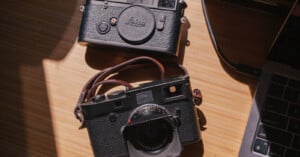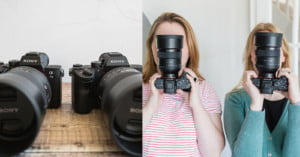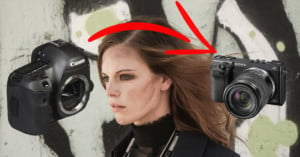
Transitioning from Film to Digital as a Leica M Photographer
Film prices have been on the rise, it’s no secret. For some, the prices they are reaching can still be seen as justifiable. But for many others, it isn’t always that simple.

Film prices have been on the rise, it’s no secret. For some, the prices they are reaching can still be seen as justifiable. But for many others, it isn’t always that simple.

The largest and national news agency of the United Kingdom and Ireland is switching from DSLR cameras to Sony mirrorless cameras.

Do you want to switch from Canon to Sony? From Sony to Nikon? From Nikon to Panasonic? From Panasonic to Fujifilm? Well, I’m going to ask you to stop, take a deep breath, and consider doing the most boring thing: absolutely nothing. Instead of switching camera brands, you should probably stick with what you have.

It’s time to confess. I’ve been converted to Sony! But there’s more. Somehow I converted my best friend, wedding photographer Charlotte Palazzo, at the same time.

Back in May of last year, I finally made the move and got myself an a7 III. I had wanted a Sony body for quite some time but was hesitant to switch. Before getting into my long-term review, I’ll first explain what made me make the switch.

It was time to upgrade my entire lighting system. My Profoto Compact heads (in perfect working condition) we coming up on their 10th anniversary. In my Profoto arsenal, I had two 300 w/s heads, one 600 w/s head, and an AcuteB600R.

Photographer Mark Duffy recently switched from Canon to Fuji, trading in the former to pick up the latter, and in this 14-minute video he shares his thoughts and impressions. For those of you who may be looking to hear insights into what the first experience with a mirrorless setup is really like, coming from the world of DSLRs, then this is a video for you.

Renowned photojournalist David Burnett has just announced that he's switching over to Sony camera equipment after over 40 years of shooting with Canon gear. Burnett recorded this 5-minute video about his decision.

Going from a state-of-the-art mirrorless system to a range finder system will be considered a backward move by many. On paper, you're giving up a lot in return for little upside. In reality, though, the story is a lot more complicated.

"Goodbye Apple, hello Windows." It's a phrase many a photographer is considering these days, but if you're afraid to make the jump, have no fear. Photographer Trey Ratcliff has already done it, and he says the water's fine. In fact, he'll explain how and why you should switch too.

It started with a phone call from the picture editor of one of UK's best-selling newspapers asking me to catch a flight that evening to Amsterdam to accompany a journalist for a story first thing the next morning.

I've been shooting Canon for the last 15 years and have finally made the decision to move on. The reasons are not really the focus of this article but rather my process for getting into a new system and making that process a creative one.

Before I became a fashion photographer I worked as a retoucher and digital tech for other photographers. Full frame was still in its first or second generation, and from what I saw all the best fashion and advertising photographers were shooting digital medium format.

Warning: This will be a longer and more in-depth post. But in the age of paid-for reviews, I felt frustrated by the lack of perspective on the "what camera should I buy" and "why mirrorless, really?" discussions that I see online.
So I wanted to give an authentic point of view about why I switched from a professional Canon bag to a mirrorless system. I hope that it helps others think through their choice when they decide to adopt one system or another.

It used to be only outliers ditched their Nikon and Canon DSLRs for more compact setups. But as mirrorless systems get better and better, more pros are making the switch and feeling compelled to let the world know exactly why.
One such photographer is Lukas Gisbert-mora, who recently ditched his Nikon for a Fuji. In the above video, he lists all of the reasons why he made the transition, and goes over the pros and cons of dropping one system for the other.

While the CaNikon war is the usual debate in the photography world, they are by no means the only two camera manufacturers out there. With the rise of the mirrorless market and improvements to the sensors packed inside, a number of photographers are starting to make the jump to companies like Sony and Fuji, even for their more serious work.

Photographer and educator Tony Northrop is stirring the pot again, offering a bit of education on a hotly debated topic. Don't worry though, this isn't about crop factor... it's arguably worse.
This time, he's taking a well-informed, in-depth look at the Canikon debate, meticulously going through the comparisons between each companies lineup of camera bodies, lenses, and flashes, and explaining why he will continue shooting Canon, despite wanting to make the switch to Nikon.

About six months ago, well-known photographer Scott Kelby switched from Nikon -- which he had shot for many years -- to Canon. The switch has caused a flurry of questions from the photo community, and so today, Kelby asked Canon Explorer of Light Rick Sammon to stay for a few minutes after they wrapped up an episode of The Grid to help him answer this question.